Here’s a little Freeze Drying 101: Oxygen and water are the enemies of freeze dried food.
One of the best ways to preserve food long term is by using Mylar bags with an oxygen absorber to keep oxygen and water from getting into the bag. If you haven’t visited the online Harvest Right Store in a while, check out our new freeze drying accessories. We offer food-grade Mylar bags in two sizes: 8″ x 12″ and a large 10″ x 14″. A pack of 50 is inexpensive and will allow you to store a great deal of freeze dried food.
Tip #1: Oxygen and water are the enemies of freeze dried food
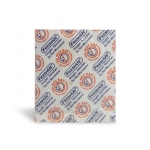 You’ll also want an oxygen absorber for each pouch. Oxygen absorbers protect your freeze dried food from spoilage, mold growth, color change, loss of nutritive values, insect damage and loss of quality. By removing residual oxygen inside packaging to below 0.01% a 300CC oxygen absorber effectively preserves packaged foods without the need for food additives/preservatives and without the need for vacuum sealing.
You’ll also want an oxygen absorber for each pouch. Oxygen absorbers protect your freeze dried food from spoilage, mold growth, color change, loss of nutritive values, insect damage and loss of quality. By removing residual oxygen inside packaging to below 0.01% a 300CC oxygen absorber effectively preserves packaged foods without the need for food additives/preservatives and without the need for vacuum sealing.
Tip #2 Waterproof Sharpies are the best way to label your Mylar pouches. No smudging!
To seal the Mylar pouches, you’ll need a heat sealer, also available in our online store.
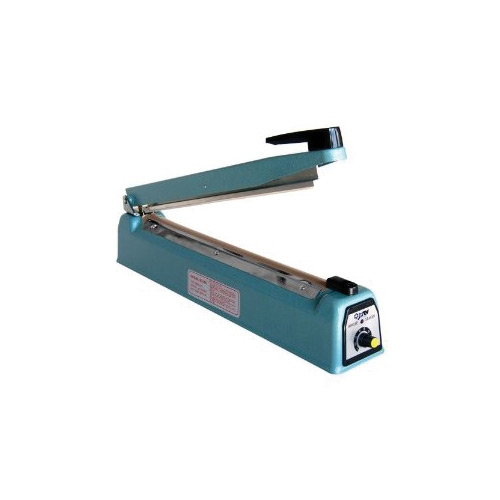 A 12” impulse sealer will give you a 5mm wide seal, the minimum size required for integrity. Our sealers are easy to use, and don’t have a warm-up time. Members of our online community actually love their impulse sealers and have shared that they’re using them for sealing all kinds of things!
A 12” impulse sealer will give you a 5mm wide seal, the minimum size required for integrity. Our sealers are easy to use, and don’t have a warm-up time. Members of our online community actually love their impulse sealers and have shared that they’re using them for sealing all kinds of things!
If you’re getting your long-term freeze dried food storage strategy underway, protect your investment with the right storage equipment. Done right, your freeze dried goodies can last up to 25 years!
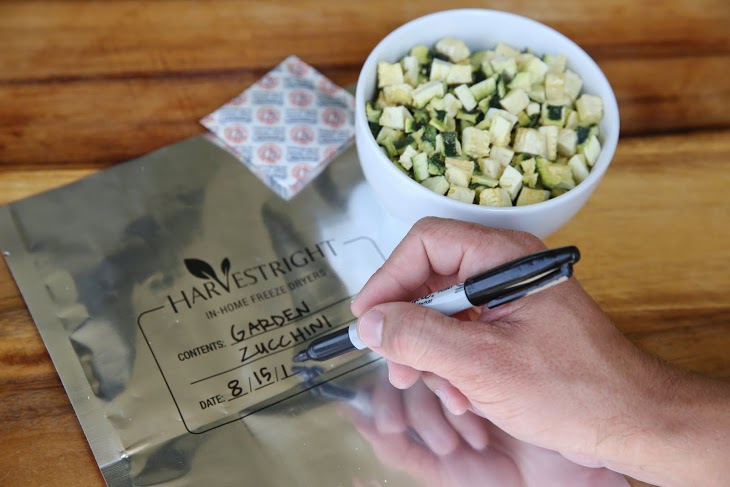
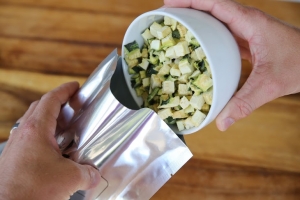
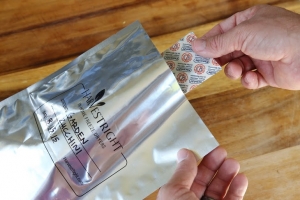

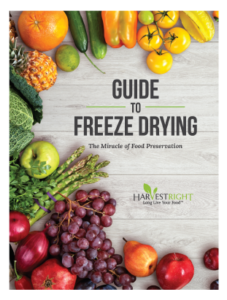
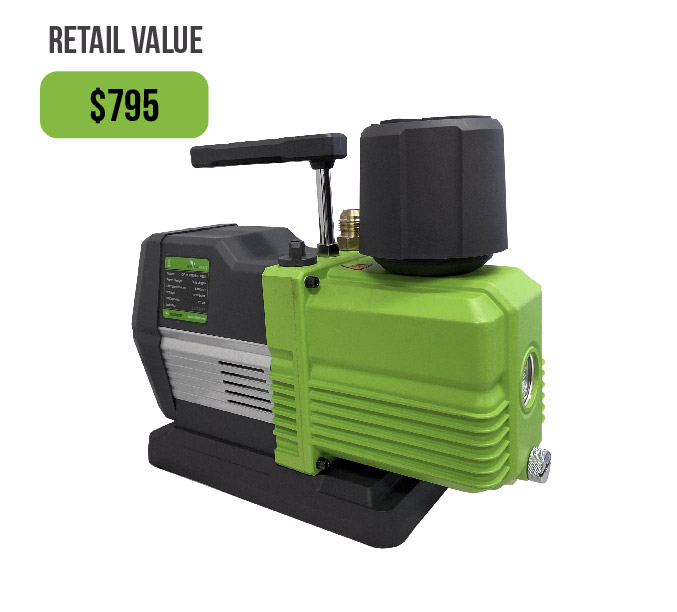
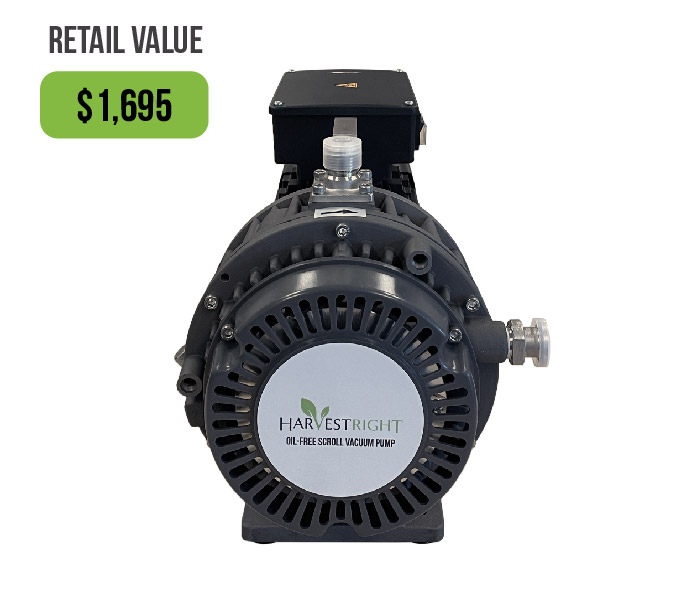
Can the dried food be stored in vacuum sealed jars? Also, will the dealing bar on the vacuum sealer machine seal the Mylar bags?
Yes. And, the freeze dryer does allow you to do a vacuum seal too. But, a simple oxygen absorber in the mason jar also works perfectly for long term storage if you keep your food away from heat and light.
How do you use the freeze dryer to “do a vacuum seal”? Do you have to use a mason jar with the little flat lid or can you use any glass jar that has previously been vacuum sealed (such as a pickle jar)?
I am interested in your product but would like to know more about the storage options after the food is dried. Thank you Lee
You can store in either mylar bags with an oxygen absorber or in mason jars with an oxygen absorber or vacuum sealed. Both of these will work for long term storage as long as you keep them out of the heat/light.
How do you store the food once it is dried? Is a normal freezer too warm? Do you have a guide that shows how long each food product can store. ..is everything about 25 years? Last fun question. …watermelon anyone?
You store it in a mylar bag or in mason jars. It’s shelf stable, so it no longer needs to be put in the refrigerator or freezer because all the water has been removed. You can rehydrate it when you are ready to eat it. Meats and some dairy products are closer to 10 to 15 years. Other items are 25 years without loss of nutritional value.
When I first got my freeze dryer I used an amp meter to measure the current draw.
When in Cooling/freezing mode: Cooling compressor 8amps – this is on the whole cycle from start to finish.
After 9 hours of cooling the dehydrating starts.
The vacuum pump starts and amperage goes to 15 amps
The food heaters start when the vacuum reaches 500mTor and cut off when mTor reaches 620 The amperage totals 20 amps with heaters on.
The vacuum will increase to over 700 mTor due to residual heat driving off the moisture. As the food cools the vacuum will decrease until it reaches 500 mTor again and the heaters come on repeating the dehydrating cycle.
Neil,
Do you consider the amount of electricity used to be energy efficient or wasteful?
Does this mean the Harvest Right freeze dryer needs a 20 amp circuit? I thought I read a 15 amp circuit is fine.
We recommend using 20 amp circuit, but the great majority of our customers run on 15 amp circuits.
I love my Foodsaver Vacuum Sealer. I use both the bags (mostly for freezer storage) and the mason jar attachments. Did you know they now have..I think it is 1/2 or 1 gallon mason jars. I put my excess flour (after it has spend time in the refrigerator) and sugar in them.
Thanks for the useful information about Mylar bags. I’ve got a lot of interesting things from your post, this is a great product to store food.
As a preparedness vendor at trade shows I get this question that was eluded to in the beginning of one of your promotional videos: Can I freeze dry my medications for long term storage? Some preppers could not survive without for example insulin for very long, and storing quantities of these items straight from the pharmacy for long duration emergencies with expiration dates is not practical.
Craig, that is something that some of our customers experiment with and express that they do have success.
Just to clarify, if you vacuum seal a mason jar with freeze dried food in it you DON’T have to put in an oxygen absorber?
An oxygen absorber is still recommended just to be safe.
What is the best way to store the Mylar bags? Should they be packed flat on plastic storage boxes or has someone found a better way?
So…can I use heavy duty three mill thick bags with my Vacmaster to store my freeze dried food?
We recommend 7 mil bags with an oxygen absorber or #10 cans with an oxygen absorber for long term storage. 3 mil bags work great if you plan to eat the food within a year or two!
I was wondering if freezing the food before putting it in the freeze dry would make a difference? would it speed up the process in the freeze dryer? Thanks
It only speeds it up just a bit. We still recommend doing the normal process normally as the freezing of your food needs to get much colder (-40 to -50 degrees) than a regular freezer can get it.
Will oxygen absorbers also remove any humidity in the air it is absorbing?
Oxygen absorbers will only remove oxygen. High quality mylar bags will prevent humidity from passing through to the product. Clear bags allow humidity/oxygen to pass through.
After reading all the questions, none explain how to vacuum seal a mason jar. Do I need special lids for the mason jars? Exactly how do the jars vacuum seal? Or can I just put the oxygen absorber in and not bother doing a vacuum seal? Will they then still last for many years?
Most customers simply put an oxygen absorber in the jar. This will do the job as long as the lid gets a good seal. Kept in a cool, dark place they will last for many years.
There are several videos on YouTube on how to vacuum seal mason jars in your harvest right.
Are Mylar bags reuseable?
Yes! Simply wash, dry, and reuse.
IF something goes wrong and your food goes bad, other than you can see mold or the food visibly has moisture, how can you tell? Can your freeze dried food get botulism like in canned goods?
If the food isn’t freeze dried all the way, it will not be totally dry. This will manifest itself as having moisture. Freeze drying does not have the risk of botulism the way canning does.
Can the oxygen absorbers be reused?
What is the recommended storage environment for storing your food as after it has been sealed in the mylar bags?
Here’s a link to a blog post that helps answer your question:
https://harvestright.com/blog/2020/methods-for-storing-preserved-food/
Do you use different strengths of oxygen absorbers with different foods and sizes of bags?
Can you use any vacuum sealer or do you have to use the Impact sealer you have on back order on the website? Also how long of wait is it to get the impact sealer?
Can the freeze dryer be used to vacuum seal the mylar bags without damage to the machine? I have seen several YouTube videos that show this method.
Look up on Amazon: “Magic Seal”. It is a vacuum sealer that is capable of handling smooth bags like mylar. Works great. Still use an oxygen absorber though even if you vacuum seal it. It removes much of the air (and the moisture in that air!) but there is still a fair amount of air left in the bag. It isn’t 100% with any vacuum sealer and the O2 absorber will get rid of the remaining O2.
My freeze dryer came with several bags of oxygen absorbers…if I open the bag to only use one or two will the others start absorbing oxygen? How do you store the oxygen absorbers so they do not start activating.
There are a couple of decent options for Oxygen absorbers. I ordered a bunch of small size mylar bags. When I open a large pack of oxygen absorbers, I put 10 in each of the small mylar bags and seal them up. Almost always I use them in groups of 10. Frequently there will be one or two left over from the big batch – or if I only use 8 out of the 10 when I open one of the small bags. I take the extras and put them in a canning jar. Just make sure the lid is on and it will be airtight and preserve them just fine. When the canning jar ends up with the number I need for my next batch, then I will use those rather than open another of my small bags.
If you were to make a note of the weight before and after freeze drying it would, I guess, tell you the exact weight of water to add when rehydrating?
Even better than that… If you are weighing the before and after with a scale that measures in grams, since one milliliter of water is by definition, one gram, this allows you to easily convert to volume of water.
How long do unopened oxygen absorbers last?